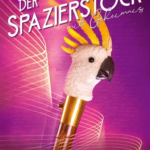
Photo:Silk fabric, decoration with stripes, and an Arabic inscription; Granada, 14th century; Abegg Stiftung, inv. nr. 5838.
The exhibition sheds light on the history of medieval Spain by presenting costly textiles from that period. Most of the exhibits are silks dating from the 12th to 15th century that were made by Muslim weavers but preserved in a Christian context. These objects are essential as contemporary sources for the changing balance of power between Christian and Muslim rulers. At the same time, they attest to the fruitful exchange that took place between religions and cultures. Silk-weaving also arrived on the Iberian Peninsula with Arab and Moorish culture in the eighth century. The Muslim weavers were masters of their trade, and they produced the most magnificent fabrics. Their silks were luxury products that attracted the attention far beyond the boundaries of their culture.
Whether as war booty, diplomatic gifts or expensive merchandise, they passed into the hands of the Christian kings and church dignitaries of northern Spain. Many fabrics survived due to the use by the church. These textiles were a defining element of the culture of representation in both Muslim and Christian Spain until well into the Late Middle Ages. The artistic centres of the north, by contrast, including cities such as Burgos and Barcelona, were known primarily for their exquisite embroideries with Christian motifs.



